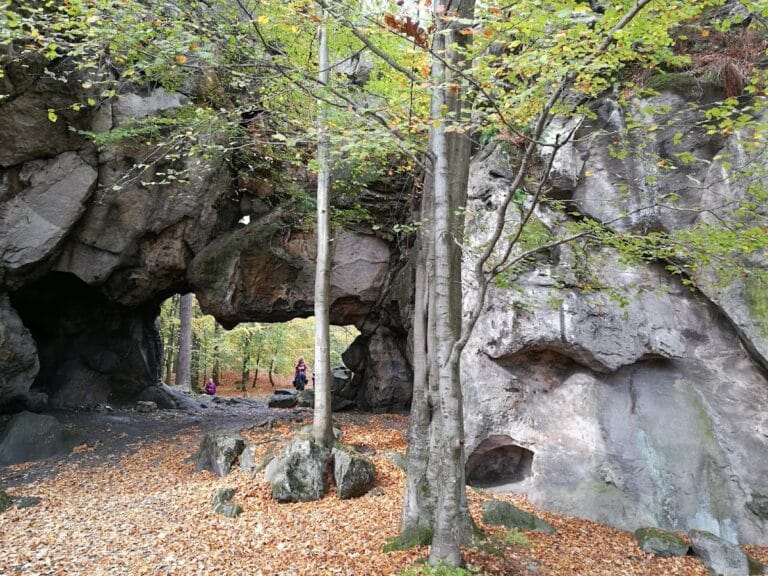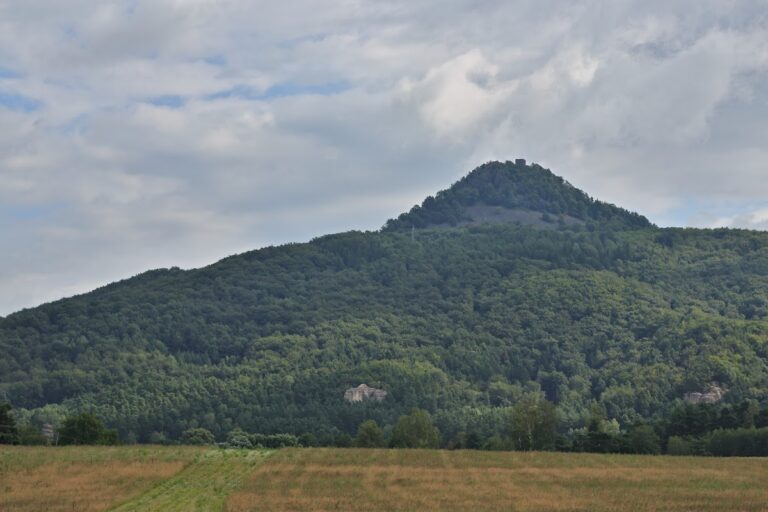Grabštejn Castle: A Historic Fortress and Chateau in the Czech Republic
Visitor Information
Google Rating: 4.6
Popularity: Medium
Google Maps: View on Google Maps
Official Website: www.hrad-grabstejn.cz
Country: Czechia
Civilization: Medieval European
Remains: Military
History
Grabštejn Castle is located in the municipality of Hrádek nad Nisou in the Czech Republic. It was established by the medieval Bohemian civilization during the 13th century, although the exact founding date is uncertain. The earliest known reference to the castle dates from the reign of King Přemysl Otakar II in the latter half of the 1200s. Initially, the fortress served as a stronghold for the Donín family, who held it as burgraves—a type of royal-appointed governor—and maintained ownership for nearly three hundred years.
In the 15th century, amid the turmoil of the Hussite Wars, Grabštejn faced several sieges as religious and political conflict swept across Bohemia. Notably, the castle withstood an assault by the coalition known as the Six Towns (Šestiměstí), a confederation of cities hostile to Catholic strongholds. The late 1500s brought change in ownership when financial difficulties and disputes over shared ownership pushed the Donín family to sell the property. Jiří Mehl of Střelice, an influential imperial councilor and vice-chancellor, acquired the castle during this period.
From 1566 to 1586, Jiří Mehl undertook a major transformation of the medieval fortress into an impressive Renaissance chateau. He also constructed a manorial farm nearby to support the estate’s agricultural needs. Of particular note was the castle chapel dedicated to Saint Barbara, which received elaborate painted decorations attributed to Heinrich Bocksberger, an artist from Salzburg. These murals stand out as exemplary examples of Renaissance and early Mannerist artistic styles in the region. After experiencing financial decline and losing favor at court following Emperor Rudolf II’s accession, Mehl abandoned Grabštejn in 1586.
Subsequent proprietors included notable families such as Ferdinand Hoffmann of Grünbühel, the Černous lineage, the Nostic family, and the Trauttmansdorff family, each contributing to the castle’s legacy. The destructive Thirty Years’ War in the early 17th century caused significant damage: a large tower burned in 1622, Swedish forces occupied the castle in 1645, and by 1655 imperial orders led to the demolition of the castle’s extensive medieval fortifications.
In 1704, Count Jan Václav Gallas acquired the estate from Jan Josef of Trauttmansdorff. The Gallas family, and later their heirs the Clam-Gallas family, initiated various renovation projects. Around 1818, Kristián Kryštof Clam-Gallas remodeled the lower castle, giving it a Neoclassical visage, and established a park featuring rare species of trees. Ownership by the Clam-Gallas family ended in 1945 when the property was confiscated under the Beneš decrees in the aftermath of World War II, leading to the family’s expulsion.
Following the war, the castle was largely neglected until 1953, when the Czechoslovak People’s Army took control. Their occupation, lasting until the early 1970s, caused severe deterioration, particularly in the upper castle. Restoration efforts commenced in 1988 and gradually continued until 2010, addressing the extensive damage. Today, the site is under state ownership, managed by the National Heritage Institute. Part of the grounds remains in use by the Czech Army for training military dogs.
Leadership roles at the castle have been filled by successive castellans in recent decades, including Jan Sedlák (1991–2013), Iva Bártová (2014–2020), and currently Věra Ozogánová.
Remains
Grabštejn Castle presents as a hilltop complex combining elements from Gothic, Renaissance, Baroque, and Neoclassical periods. Originally conceived as a bergfried-type fortress—a design featuring a large, fortified tower known as a bergfried—it consisted of two principal areas: the outer bailey (an enclosed courtyard) and the castle core to the north. Within this core stood a two-story palace with three rooms arranged along the northern defensive wall, as well as a free-standing bergfried tower serving as a stronghold and lookout.
During the 15th century, the castle was expanded with the addition of a chapel situated between the palace and bergfried, demonstrating the growing importance of religious functions within the fortress. Another three-room building was built along the eastern wall of the core. At the outer bailey, late Gothic and Renaissance remodeling introduced a large structure with an entry gateway on the eastern side. This replaced a likely earlier wide zwinger, or outer defensive ward.
Defensive improvements included reinforcing the southern curtain wall of the outer bailey with two semi-circular bastions designed to face inward, intended to accommodate artillery defense—reflecting advances in military technology of the Renaissance period. Over time, Renaissance-style buildings fully enclosed the perimeter of this first courtyard, creating a cohesive and secure living space.
The facades of the two-story buildings facing the courtyard display sgraffito rustication—a technique where layers of plaster are scratched to reveal contrasting colors underneath, producing a decorative finish. Although their external appearance dates mainly from 1843, interiors preserve rich Baroque features. The bergfried tower, once central to the castle’s defense, underwent Neo-Gothic modifications in 1846, resulting in the form visible today.
East of the main castle hill lie remnants of a 15th-century siege camp. Archaeological traces include the foundations of fortified command posts and artillery emplacements, offering insight into medieval military operations during prolonged attacks.
At the northern base of the castle hill stands the lower castle, known locally as Nový zámek. This part of the complex is dominated by a two-story Empire-style rectangular building featuring a central risalit—a vertical section projecting from the facade—and faces a one-story inn building characterized by seven window axes. This ensemble reflects 19th-century architectural tastes and functions connected to the estate’s administrative and hospitality needs.
Within the castle, the chapel dedicated to Saint Barbara remains a highlight for scholars and visitors alike. Its walls bear remarkable Renaissance and early Mannerist murals traditionally credited to Heinrich Bocksberger, whose Salzburg origins linked him to artistic developments beyond Bohemia. The chapel’s richly decorated interior furnishings complement the vivid paintings, marking it as a rare surviving example of this artistic period in the Czech lands.
The entire complex occupies a commanding position above the Václavický stream, combining defensive, residential, and agricultural elements. The large central courtyard is enclosed by multiple wings, complemented by a smaller courtyard adjoining a distinctive round corner tower topped with a dome-shaped roof.
In recognition of its architectural and historical value, Grabštejn Castle and its surrounding park were officially declared a national cultural monument of the Czech Republic in 2008, ensuring protection and continued preservation for future generations.










